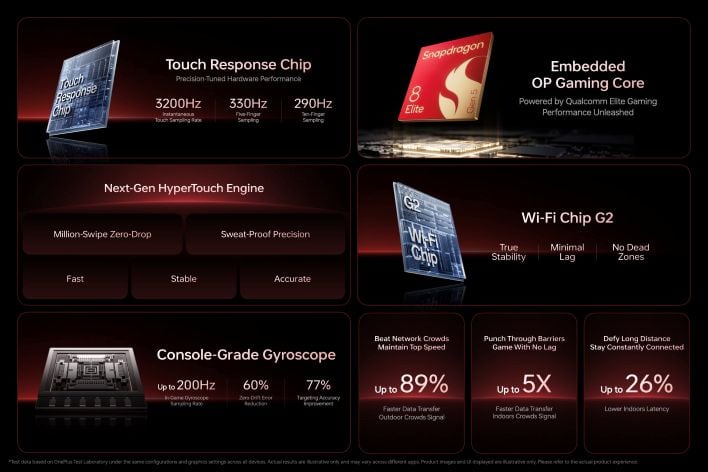Central to the system is the in-house-developed OnePlus Gaming Core, a chip-level solution engineered for gaming scenarios. This core features a OnePlus CPU Scheduler that replaces the traditional Completely Fair Scheduler to intelligently allocate computing resources, effectively eliminating scheduling delays and resource conflicts during gameplay. Apparently, so deep is the integration, OnePlus claims that over 20,000 lines of original code were developed at Android’s foundational level along with 254 patents. The scheduler achieves up to a 22.74% reduction in CPU instructions for key tasks, minimizing CPU load and power consumption while guaranteeing a stable 120 fps experience.
Complementing this is Next-Gen HyperRendering, which reconstructs the GPU rendering pipeline to deliver an 80% improvement in per-frame rendering efficiency. Native rendering and frame interpolation directly through the main chipset ought to eliminate latency typically associated with dedicated interpolation chips.
And then there’s the Performance Tri-Chip comprised of, well, triple chips. There’s the main Performance Chip built on the Snapdragon 8 Elite Gen 5 platform, which integrates the aforementioned Gaming Core. The second is a dedicated Touch Response Chip that accelerates touch processing offloaded from the main SoC and supports up to a 3200Hz instantaneous sampling rate, along with the new Next-Gen HyperTouch engine for faster and more reliable touch response. Finally, the Wi-Fi Chip G2 improves network connectivity in weak signal environments with advanced RF modules and algorithms like SmartLink, prioritizing gaming traffic for smoother and more stable online play.
With this new setup, OnePlus is not only keeping its promise to push the boundaries of Android gaming, further cemented by the OnePlus 15 becoming the official smartphone partner for the Call of Duty: Mobile World Championship 2025 Finals.



